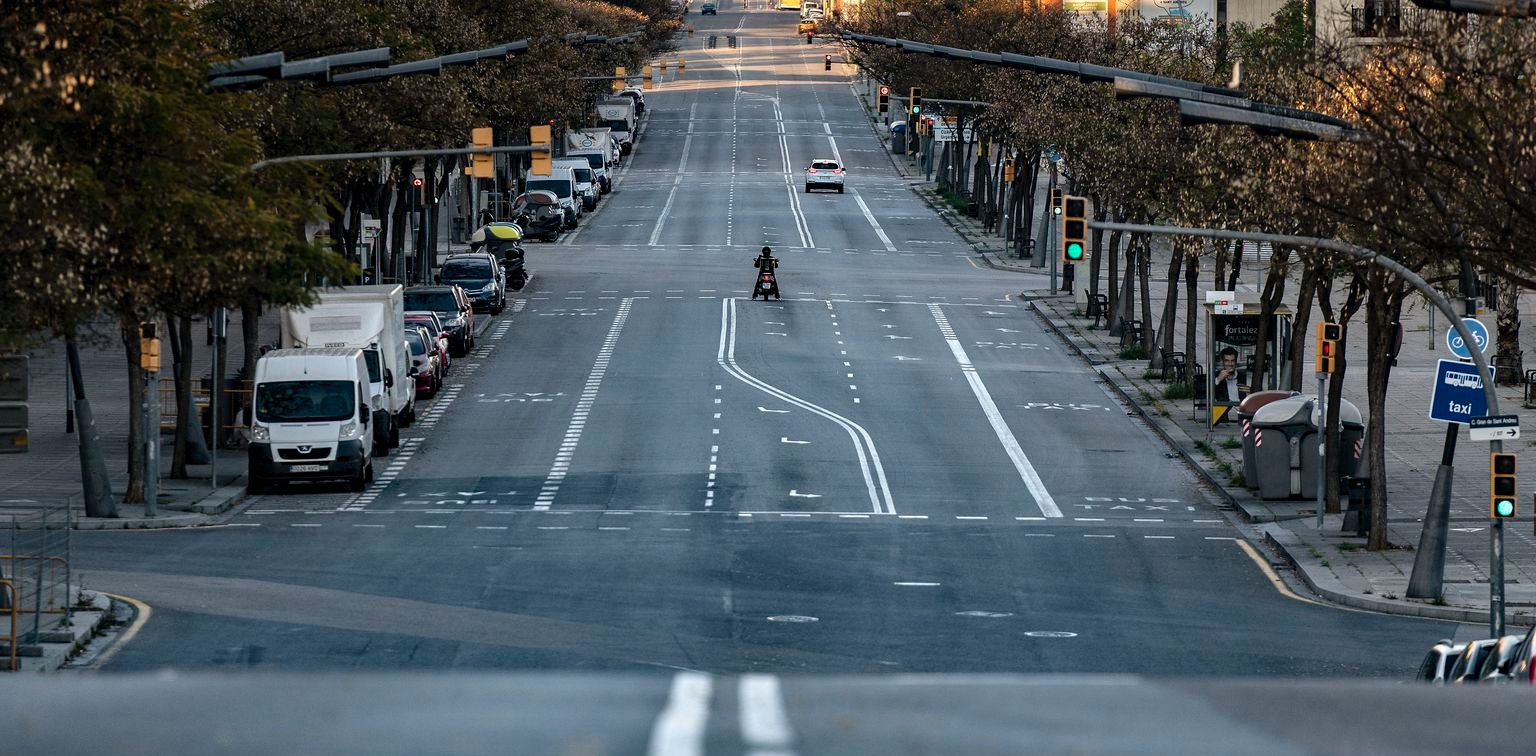Expanding teleworking would reduce pollution by up to 10%
A study by the ICTA-UAB analyses different proposals for the implementation of telework based on mobility and air quality data obtained in Barcelona during the lockdown.

Over the past five years, the annual average concentrations of NO2 have repeatedly exceeded the maximum permissible values, consequently causing thousands of associated premature deaths.
Implementing teleworking two, three or four days a week would reduce the levels of nitrogen dioxide (NO2), the main pollutant related to traffic emissions, respectively by 4%, 8% and 10%. This is the main conclusion of a study carried out by the Institute of Environmental Science and Technology of the Universitat Autònoma de Barcelona (ICTA-UAB). The study analyses the data obtained from an air quality model, together with the measurements of the XVPCA stations (Xarxa de Vigilància i Previsió de la Contaminació Atmosfèrica) registered in the Metropolitan Area of Barcelona (AMB), during the period of mandatory mobility restrictions during to the COVID-19 lockdown.
Mobility restrictions due to the pandemic have forced many people to work from home, thus increasing teleworking and improving air quality in cities. Starting with this exceptional situation, the researchers of the URBAG project at the ICTA-UAB have carried out a large-scale pilot study that allows reflecting upon the lessons learned during lockdown in terms of air pollution declines.
Taking into account the fact that 85% of the labour force of the AMB is dedicated to the service sector, and approximately 40% of all personal vehicle transit is work-related, researchers defined three different socio-labour scenarios based on a week of two, three or four days teleworking, and studied the changes in pollution with an air quality model for each.
The first scenario considers an increase in teleworking two days a week, which would reduce traffic-related emissions by 5% and, therefore, NO2 levels by 4%. This scenario assumes a 12.5% decrease in work-related travel, if 20% of workers in the service sector were to take this option. A second scenario consisting of three days of teleworking would reduce emissions by 10% and NO2 levels by 8%, reducing work-related trips by 25%. For this, 30% of the labour force of the service sector would have to take advantage of this option. A third scenario would reduce traffic emissions by 15%, and consequently NO2 levels by 10%, if 40% of employees in the services sector teleworked four days a week, reducing their trips by 37.5%.
The research was designed in collaboration with the Anthesis Lavola team, a company with extensive experience in urban and sustainable mobility planning, and was based on the mobility reports published by the Barcelona Metropolitan Transport Authority.
Additional scenarios were also defined combining the reduction of personal and occupational mobility in addition to teleworking, to replicate the behaviours seen during the stages of severe COVID-19 lockdowns. The researchers conclude that a “light confinement” situation with a 45% reduction in private vehicles used for work-related travel would reduce traffic emissions by 25%. This scenario would be achieved with a four-day remote workweek and a 15% reduction in other work-related trips. Additionally, online education would avoid 20% of private vehicle use and driving to the shops would be reduced by 30%.
Over the past five years, the annual average concentrations of NO2 have repeatedly exceeded the maximum permissible values in some of the AMB monitoring stations, consequently causing thousands of associated premature deaths. Therefore, the ICTA-UAB researcher and main author of the study, Alba Badia, recalls that “the application of this last scenario could be viable and realistic during periods of high pollution, as it is simply based on the maximization of teleworking and the reduction of other work-related travel and shopping”.
Article
Badia, A., Langemeyer, J., Codina, X. et al. A take-home message from COVID-19 on urban air pollution reduction through mobility limitations and teleworking. npj Urban Sustain 1, 35 (2021). https://doi.org/10.1038/s42949-021-00037-7